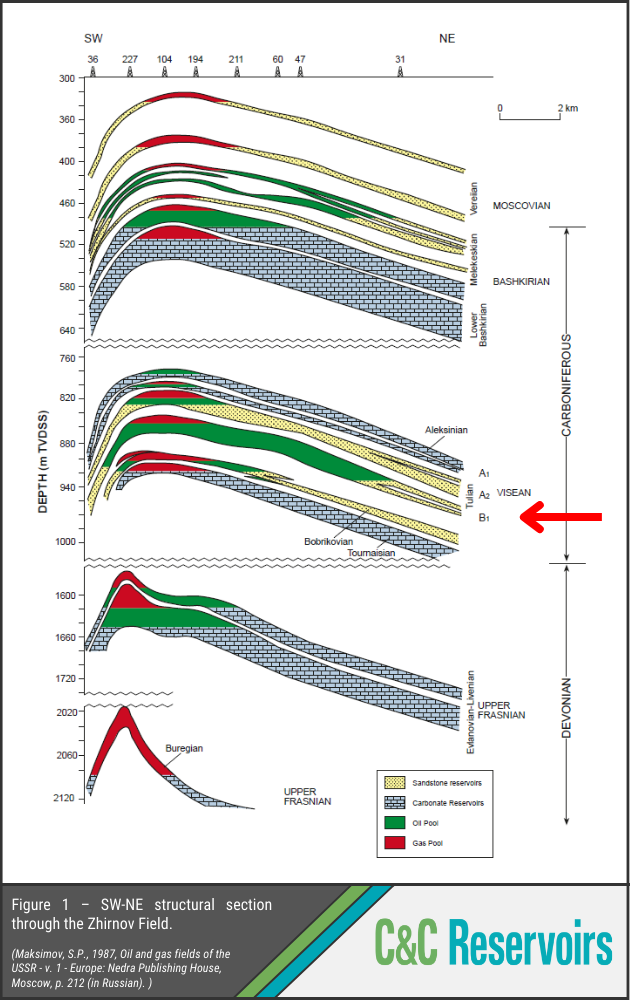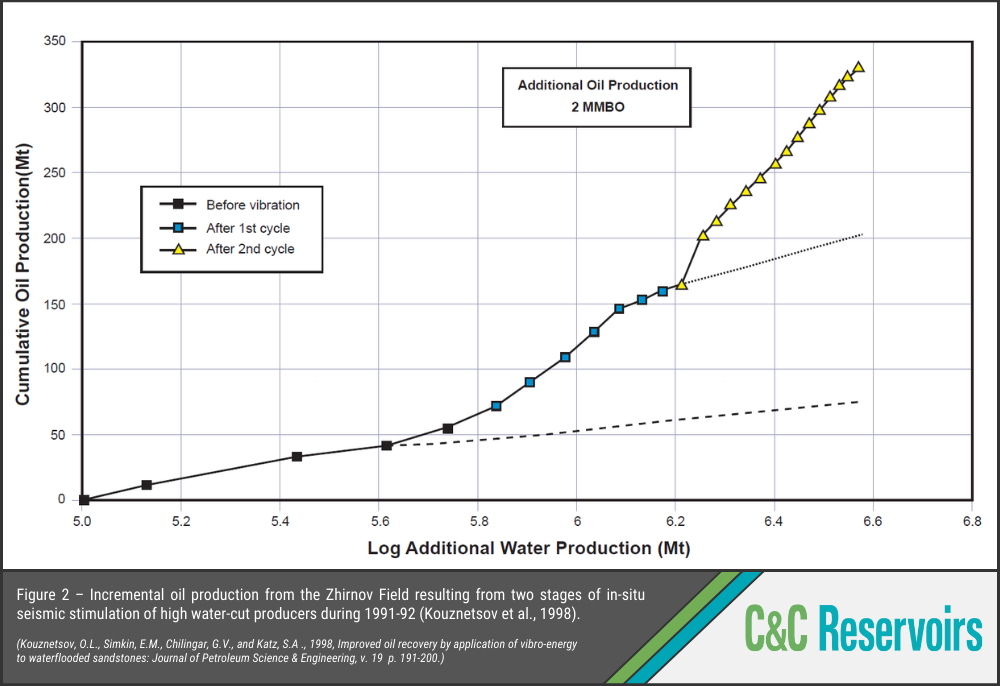The Tulian B1 Reservoir
Analogue Spotlight
This week’s Analogue Spotlight is the Tulian B1 Reservoir in Russia. This global oil and gas analogue provides an excellent case study on in-situ seismic stimulation.
In-situ seismic stimulation involves passing low-frequency vibrations through a reservoir using wireline tools. The vibrations reduce the oil/water interfacial tension and release dissolved CO2 from the water, which increases the oil relative permeability when water saturations are high.
In the Tulian B1 reservoir at the Zhirnov Field, most wells were producing at >90% water-cut by 1991. Significant volumes of bypassed oil remained unswept by water injection. These were targeted by a two-stage vibration campaign in 1991-92. Wells were monitored within a 2.2 km radius of the source with the following results:
Vibration recovered an incremental 2 MMBO at Zhirnov. It has been used in fields across the Former Soviet Union, including nine in DAKS.
The Digital Analogue Knowledge System (DAKS™) contains many global oil and gas analogues specifically focused on heavy oil fields. Use these analogues to benchmark your own field, and delve into C&C Reservoirs Reservoir Evaluation Reports to discover best practices from top performing reservoirs that can be applied to your own assets.


